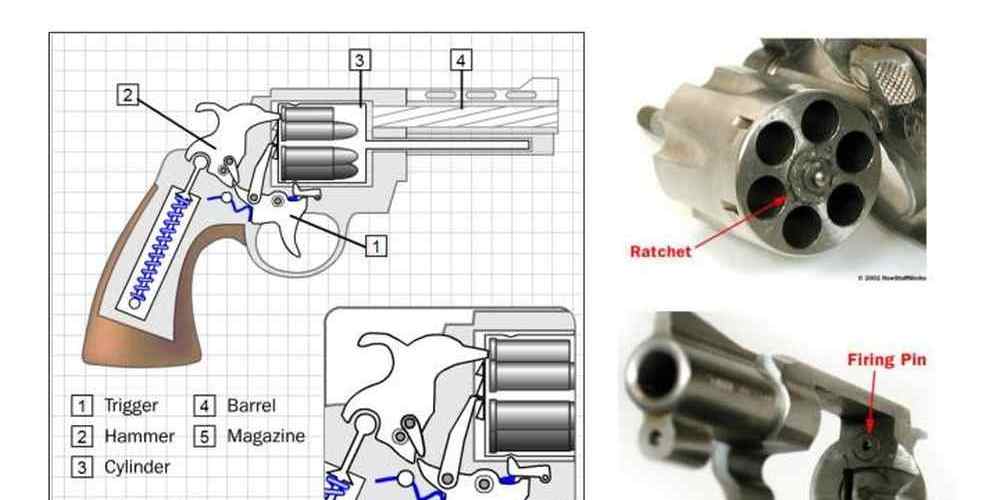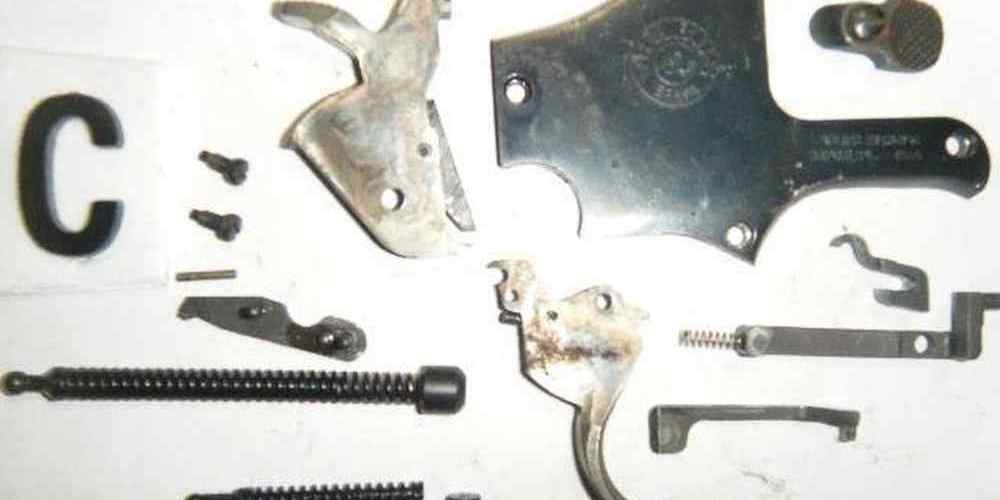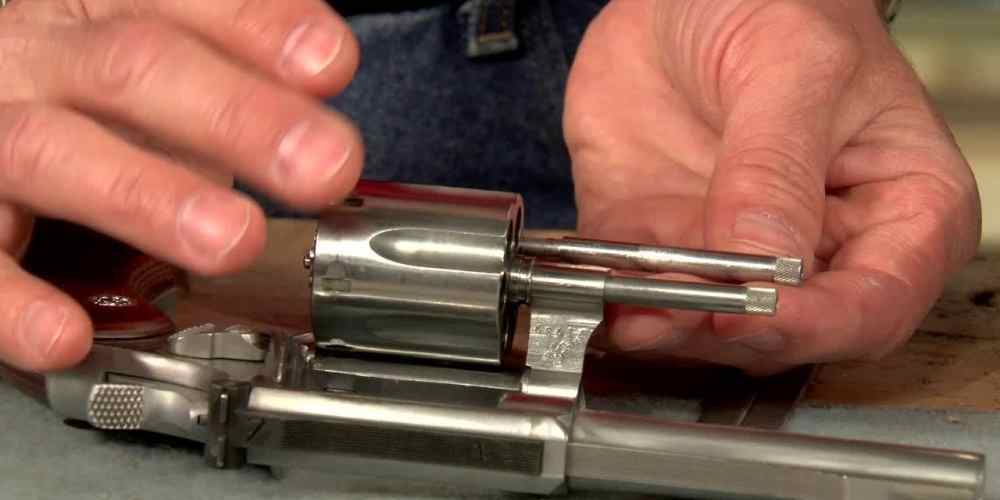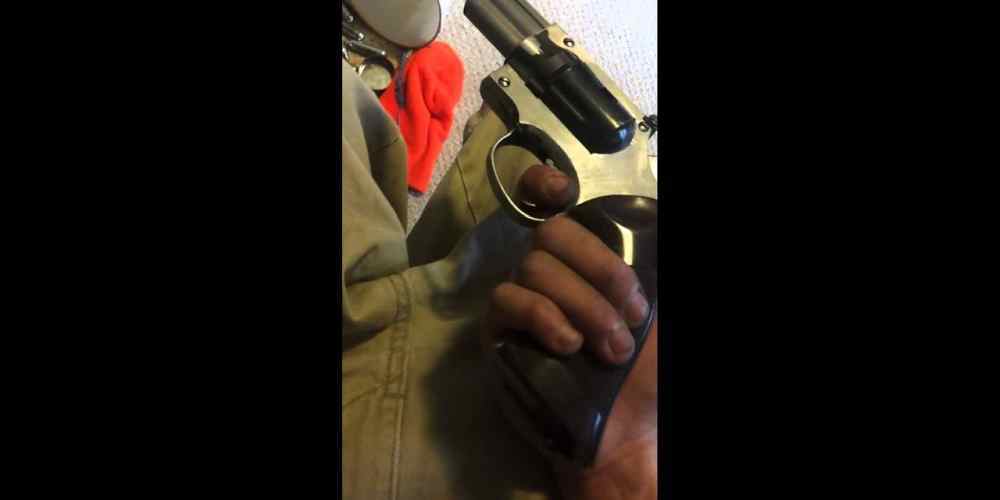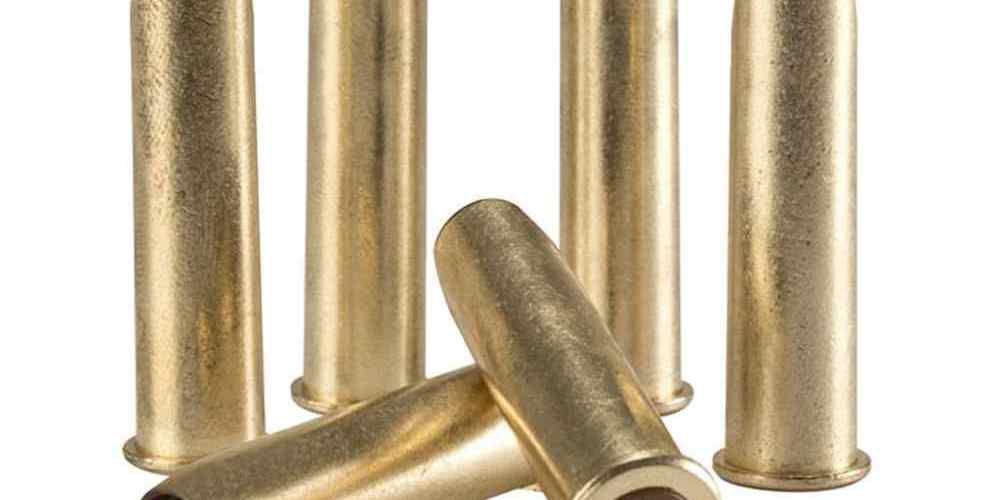“Revolver Trigger Work: Precision for every shot.”
Understanding the Importance of Trigger Pull Weight
When it comes to shooting accurately and consistently, the trigger pull weight of a revolver plays a crucial role. Understanding the importance of trigger pull weight and how it can affect your shooting performance is essential for any gun enthusiast or professional shooter.
Trigger pull weight refers to the amount of force required to pull the trigger and fire the gun. A lighter trigger pull weight typically allows for more precise and controlled shooting, while a heavier trigger pull weight can make it more difficult to shoot accurately. Finding the perfect trigger pull weight for your revolver is a personal preference that can vary depending on your shooting style and experience level.
One of the main benefits of having a lighter trigger pull weight is improved accuracy. With less force required to pull the trigger, shooters can focus more on their aim and technique, resulting in tighter groupings and more consistent shots. This is especially important for competitive shooters who need to hit targets with precision and speed.
On the other hand, a heavier trigger pull weight can be beneficial for shooters who prioritize safety and control. A heavier trigger pull weight can help prevent accidental discharges and ensure that the shooter has a firm grip on the gun before firing. This can be particularly important in high-stress situations where split-second decisions need to be made.
Finding the perfect trigger pull weight for your revolver involves a combination of personal preference and practical considerations. Some shooters may prefer a lighter trigger pull weight for target shooting or competition, while others may opt for a heavier trigger pull weight for self-defense or hunting purposes. It’s important to experiment with different trigger pull weights and find what works best for you.
There are several ways to adjust the trigger pull weight of a revolver, including using aftermarket trigger kits or working with a gunsmith. Trigger kits can be a cost-effective and relatively easy way to customize the trigger pull weight of your revolver, allowing you to fine-tune it to your liking. Working with a gunsmith is another option for more advanced modifications and adjustments.
When adjusting the trigger pull weight of your revolver, it’s important to consider safety and reliability. A trigger pull weight that is too light can increase the risk of accidental discharges, while a trigger pull weight that is too heavy can affect your shooting performance. It’s important to find a balance that allows for both safety and accuracy.
In conclusion, understanding the importance of trigger pull weight and finding the perfect pull for your revolver is essential for any shooter looking to improve their accuracy and performance. Whether you prefer a lighter trigger pull weight for precision shooting or a heavier trigger pull weight for safety and control, experimenting with different options and seeking professional advice can help you find the perfect balance. So, take the time to explore your options and fine-tune your trigger pull weight to enhance your shooting experience.
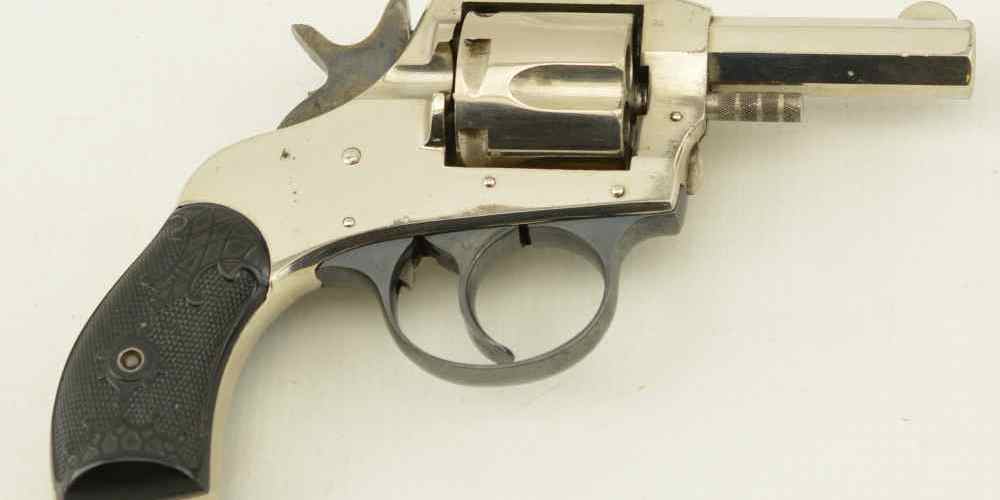
Comparing Different Trigger Styles for Revolvers
When it comes to revolvers, one of the most important aspects to consider is the trigger pull. The trigger is what allows you to fire the gun, so having a smooth and consistent trigger pull is crucial for accuracy and overall shooting performance. There are several different trigger styles available for revolvers, each with its own unique characteristics and benefits. In this article, we will compare some of the most popular trigger styles for revolvers to help you find the perfect pull for your needs.
One of the most common trigger styles for revolvers is the double-action trigger. This type of trigger requires a longer and heavier pull to cock the hammer and fire the gun. Double-action triggers are popular for their simplicity and reliability, as they do not require any additional manipulation to fire the gun. However, the heavy trigger pull can make it more difficult to achieve precise shots, especially at longer distances.
On the other hand, single-action triggers are known for their light and crisp pull. With a single-action trigger, the hammer must be manually cocked before each shot, which can be done by either pulling the hammer back with your thumb or by using the gun’s external hammer spur. Single-action triggers are favored by many shooters for their accuracy and ease of use, but they do require an extra step before each shot.
For those who want the best of both worlds, there are also double-action/single-action triggers available. These triggers allow the gun to be fired in either double-action or single-action mode, giving shooters the option to choose the trigger pull that best suits their needs. Double-action/single-action triggers are popular among competitive shooters and law enforcement officers who require versatility in their firearms.
Another important factor to consider when choosing a trigger style for your revolver is the trigger weight. Trigger weight refers to the amount of force required to pull the trigger and fire the gun. Lighter trigger weights are generally preferred for target shooting and precision shooting, as they allow for more control and consistency in shot placement. However, lighter trigger weights can also increase the risk of accidental discharges, so it is important to practice proper trigger discipline and safety precautions.
In contrast, heavier trigger weights are often preferred for self-defense and carry guns, as they reduce the risk of accidental discharges and provide added security. Heavier trigger weights can also help prevent fatigue during extended shooting sessions, as they require more effort to pull. Ultimately, the ideal trigger weight will depend on your personal preferences and shooting style.
In conclusion, finding the perfect trigger pull for your revolver is a matter of personal preference and shooting needs. Whether you prefer a double-action, single-action, or double-action/single-action trigger, there are plenty of options available to suit your needs. Consider factors such as trigger weight, shooting style, and intended use when choosing a trigger style for your revolver. With the right trigger pull, you can improve your shooting accuracy and overall performance with your revolver.
Tips for Improving Trigger Control and Accuracy
When it comes to shooting accurately with a revolver, trigger control is key. The trigger is the mechanism that releases the hammer or firing pin, causing the gun to discharge. A smooth, consistent trigger pull is essential for accuracy, as any jerky or uneven movement can throw off your aim. In this article, we will discuss some tips for improving trigger control and accuracy with your revolver.
One of the first things to consider when it comes to trigger control is the weight of the trigger pull. The weight of the trigger pull refers to the amount of force required to pull the trigger and release the hammer. A lighter trigger pull can make it easier to shoot accurately, as it requires less effort to pull the trigger smoothly. However, a trigger that is too light can be dangerous, as it increases the risk of accidental discharge. Finding the right balance between a light and heavy trigger pull is essential for accuracy and safety.
Another factor to consider when it comes to trigger control is the length of the trigger pull. The length of the trigger pull refers to the distance the trigger must travel before the gun fires. A shorter trigger pull can make it easier to shoot accurately, as there is less room for error in the movement of the trigger finger. However, a trigger that is too short can be difficult to control, leading to jerky or uneven movements. Again, finding the right balance between a short and long trigger pull is essential for accuracy and consistency.
In addition to the weight and length of the trigger pull, the smoothness of the trigger is also important for accuracy. A smooth trigger pull allows for consistent and controlled movement of the trigger finger, leading to more accurate shots. A rough or gritty trigger can cause the finger to jerk or slip, leading to missed shots. Regular maintenance and cleaning of the trigger mechanism can help to keep it smooth and functioning properly.
Practicing proper trigger control is essential for improving accuracy with your revolver. One way to practice is through dry firing, which involves pulling the trigger without live ammunition in the gun. This allows you to focus on your trigger control and technique without the distraction of recoil or noise. Dry firing can help you to identify any issues with your trigger control and work on improving them.
Another way to improve trigger control is through live fire practice. By shooting regularly at the range, you can work on your trigger control in a real-world setting. Pay attention to how you are pulling the trigger and make adjustments as needed. Experiment with different grip techniques and finger placements to find what works best for you.
In conclusion, trigger control is essential for accuracy with your revolver. By paying attention to the weight, length, and smoothness of the trigger pull, as well as practicing regularly, you can improve your accuracy and consistency. Remember to always prioritize safety when working on trigger control, and never hesitate to seek guidance from a professional if needed. With practice and dedication, you can find the perfect trigger pull for your revolver and shoot with confidence and precision.
Customizing Your Revolver’s Trigger for a Personalized Feel
Revolver Trigger Work: Finding the Perfect Pull
When it comes to customizing your revolver, one of the most important aspects to consider is the trigger. The trigger is the interface between you and your firearm, and having a trigger that feels just right can make a world of difference in your shooting experience. Whether you’re a competitive shooter looking to gain an edge or a casual shooter looking to improve your accuracy, finding the perfect trigger pull for your revolver is key.
There are a few different ways to customize your revolver’s trigger to suit your preferences. One of the most common methods is to adjust the trigger pull weight. The trigger pull weight refers to the amount of force required to pull the trigger and fire the gun. Some shooters prefer a lighter trigger pull for faster shooting, while others prefer a heavier trigger pull for added safety and control. Finding the right balance for you is essential for achieving optimal performance.
Another important aspect of trigger customization is the trigger reset. The trigger reset is the distance the trigger must travel forward after firing before it can be pulled again. A shorter trigger reset can help you shoot faster and more accurately, while a longer trigger reset can provide added control and consistency. Experimenting with different trigger reset lengths can help you find the perfect balance for your shooting style.
In addition to adjusting the trigger pull weight and reset, you can also customize the shape and feel of the trigger itself. Some shooters prefer a flat-faced trigger for a more consistent feel, while others prefer a curved trigger for added comfort. The shape of the trigger can have a significant impact on how the trigger feels in your hand and how it affects your shooting performance. Finding a trigger shape that feels comfortable and natural to you is essential for achieving optimal results.
When customizing your revolver’s trigger, it’s important to work with a qualified gunsmith who has experience with revolver trigger work. A skilled gunsmith can help you determine the best trigger pull weight, reset length, and shape for your specific needs and preferences. They can also ensure that the trigger modifications are done safely and correctly, so you can enjoy improved performance without compromising safety.
In conclusion, customizing your revolver’s trigger can have a significant impact on your shooting experience. By adjusting the trigger pull weight, reset length, and shape to suit your preferences, you can achieve a personalized feel that enhances your accuracy, speed, and control. Working with a qualified gunsmith is essential for ensuring that the trigger modifications are done safely and correctly. With the right trigger work, you can take your shooting to the next level and enjoy a more enjoyable and successful shooting experience.
Exploring the Benefits of Professional Trigger Work Services
Revolver trigger work is a crucial aspect of firearm customization that can greatly enhance the shooting experience for gun owners. The trigger pull on a revolver is one of the most important factors in determining accuracy and overall performance. A smooth, consistent trigger pull can make all the difference in hitting your target with precision.
When it comes to revolver trigger work, there are a few key factors to consider. The first is the weight of the trigger pull. A heavy trigger pull can make it difficult to shoot accurately, as it requires more force to pull the trigger and can lead to jerking or flinching. On the other hand, a light trigger pull can make it easier to shoot accurately, but can also increase the risk of accidental discharges.
Another important factor to consider is the smoothness of the trigger pull. A rough or gritty trigger can make it difficult to shoot accurately, as it can cause the shooter to hesitate or jerk the trigger. A smooth trigger pull, on the other hand, can help the shooter maintain a steady aim and fire with precision.
Professional trigger work services can help gun owners achieve the perfect trigger pull for their revolver. These services typically involve polishing and smoothing the internal components of the trigger mechanism, as well as adjusting the weight of the trigger pull to the shooter’s preference. By fine-tuning the trigger pull, gun owners can improve their shooting accuracy and overall performance with their revolver.
One of the main benefits of professional trigger work services is the ability to customize the trigger pull to suit the shooter’s preferences. Whether you prefer a light, crisp trigger pull for precision shooting, or a heavier trigger pull for added safety, a professional gunsmith can help you achieve the perfect balance for your needs. By working with a skilled gunsmith, you can ensure that your revolver performs at its best and meets your specific shooting requirements.
In addition to improving accuracy and performance, professional trigger work services can also enhance the overall feel and handling of your revolver. A smooth, consistent trigger pull can make shooting more enjoyable and comfortable, allowing you to focus on your target without distractions. By investing in trigger work services, you can optimize your revolver for maximum performance and enjoyment on the range or in the field.
When considering professional trigger work services for your revolver, it’s important to choose a reputable gunsmith with experience and expertise in firearm customization. Look for a gunsmith who has a proven track record of quality work and satisfied customers, and be sure to communicate your specific preferences and requirements for the trigger pull. By working closely with a skilled gunsmith, you can achieve the perfect trigger pull for your revolver and enjoy improved accuracy, performance, and shooting comfort.
In conclusion, revolver trigger work is a valuable service that can greatly enhance the shooting experience for gun owners. By customizing the trigger pull to suit your preferences, you can improve accuracy, performance, and overall enjoyment with your revolver. Professional trigger work services offer a range of benefits, from customizing the weight and smoothness of the trigger pull to enhancing the feel and handling of your firearm. If you’re looking to optimize your revolver for maximum performance and shooting comfort, consider investing in professional trigger work services from a reputable gunsmith.




